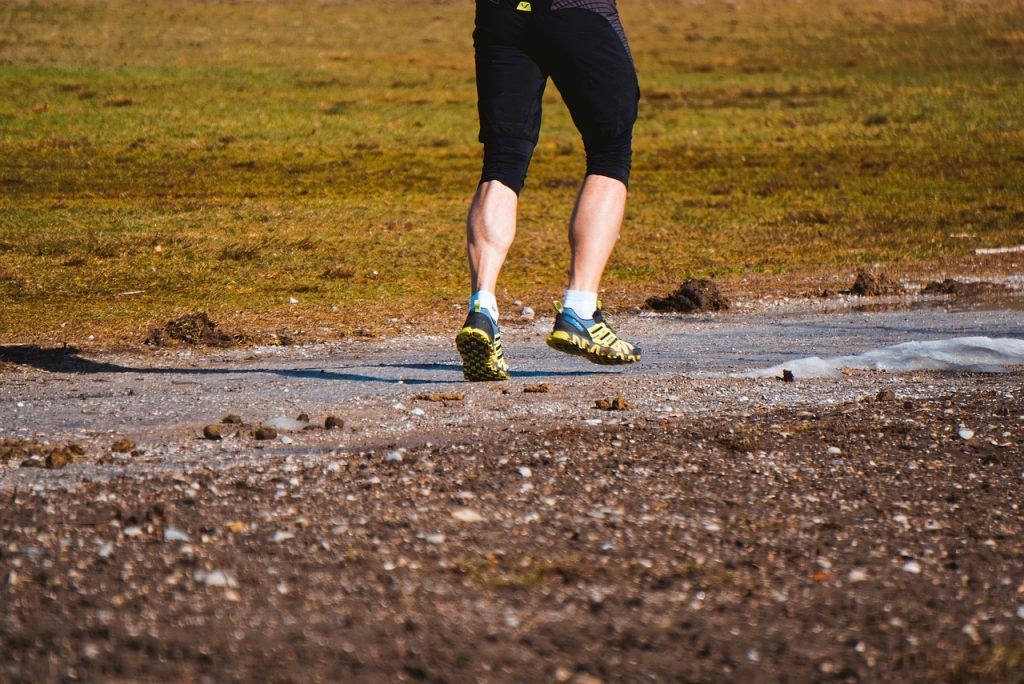Your attire can significantly affect your comfort and performance during a run. When comparing running tights vs leggings, it’s important to note that they may look alike but are designed for different purposes and offer distinct advantages. Running tights are specifically crafted to boost physical activity, featuring compression technology, moisture-wicking fabrics, and enhanced support for high-impact workouts. On the other hand, leggings are more adaptable and ideal for a range of activities from yoga to everyday wear, often focusing on comfort and fashion rather than being tailored for performance.
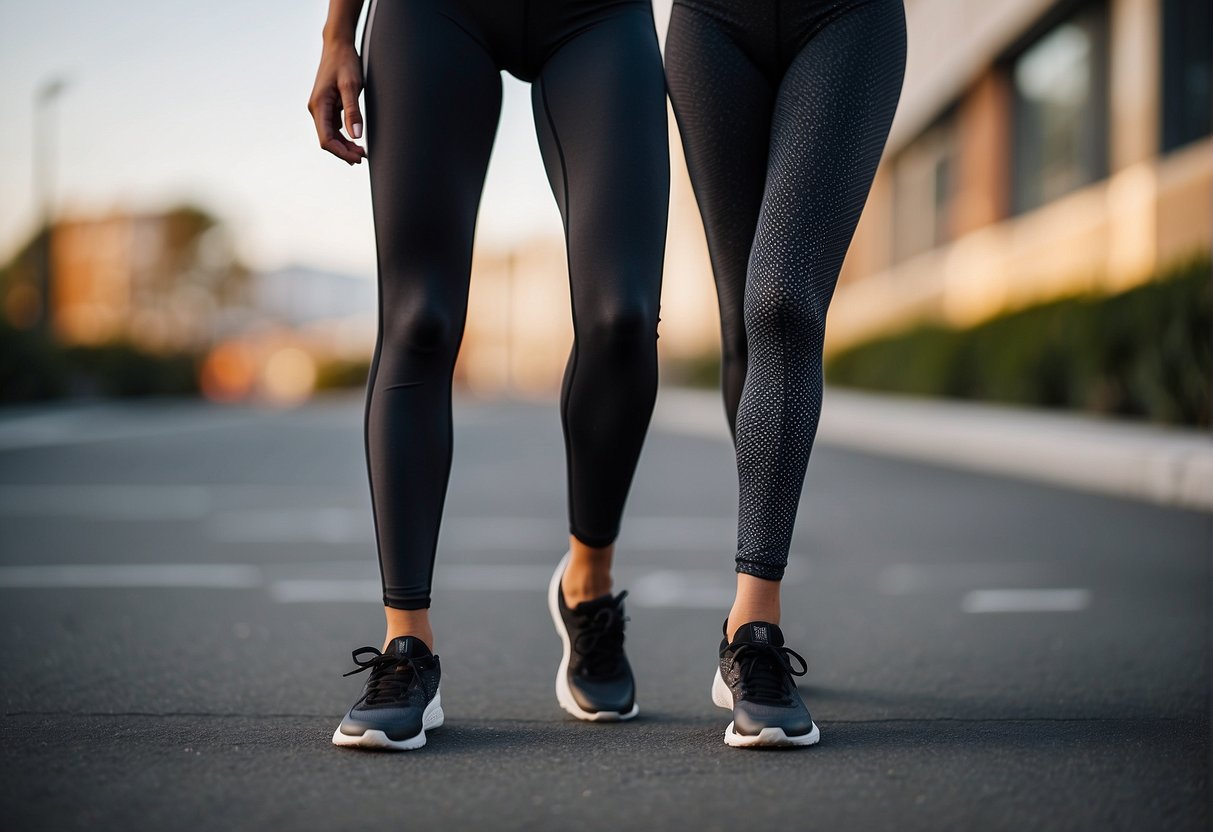
Your choice between running tights and leggings will largely depend on the conditions in which you run and your personal preference. Moisture-wicking fabrics and the right compression level can make running tights an excellent choice for longer runs or colder weather, ensuring you stay dry and supported. Leggings, on the other hand, might be the go-to for light jogs, gym sessions, or when seeking a balance between fitness and leisure activities. The importance of fit cannot be overstated—properly fitting running attire reduces the risk of chafing and discomfort, allowing you to focus on reaching your peak performance.
Key Takeaways
- Running tights offer technical features specifically designed for high-impact activities.
- The choice between tights and leggings depends on running conditions and personal preference.
- Proper fit in running attire is crucial for comfort and can enhance overall performance.
Quick Navigation
Understanding Running Tights vs Leggings
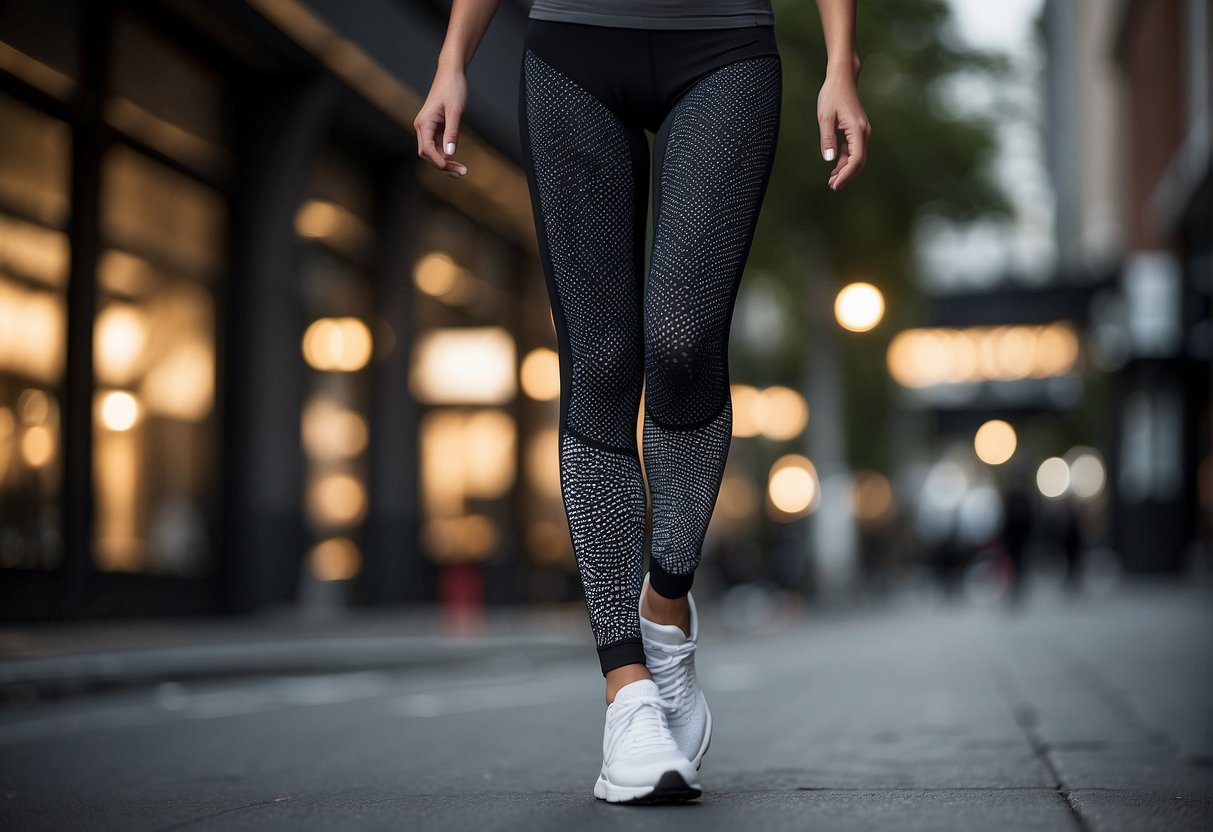
Running tights and leggings might look similar at first glance, but knowing their distinctions is crucial when you’re aiming for the best performance and comfort during your exercise routines.
Key Differences
Running Tights: Specifically designed for running, running tights are generally made with a higher elastane content to provide a snug fit that stays in place during vigorous movements. They often feature compression elements, aiding muscle support and circulation.
Yoga Leggings: In contrast, yoga leggings are typically softer and offer more stretch, prioritizing comfort and a range of motion over the compression running tights may offer. While leggings are versatile for various activities, they lack the specialized features for running.
Variety of Styles
- Running Tights: Available in various thicknesses, running tights may come with or without thermal lining for different weather conditions. Reflective details for visibility are a common feature.
- Leggings: With a broader range of designs, they appeal to exercise enthusiasts and those seeking casual wear. Leggings often have a wider waistband and can come with pockets, mesh panels, and decorative patterns.
Compression Running Tights vs Leggings
Compression Tights: Built with performance in mind, compression tights are meant to enhance blood flow, reduce muscle fatigue, and improve recovery times post-exercise.
Regular Leggings: While they might offer some degree of support, they do not have the same focus on enhancing athletic performance as their compression counterparts. They’re generally chosen for comfort rather than specific sport-related benefits.
The Importance of Fit and Fabric for Running Tights vs Leggings
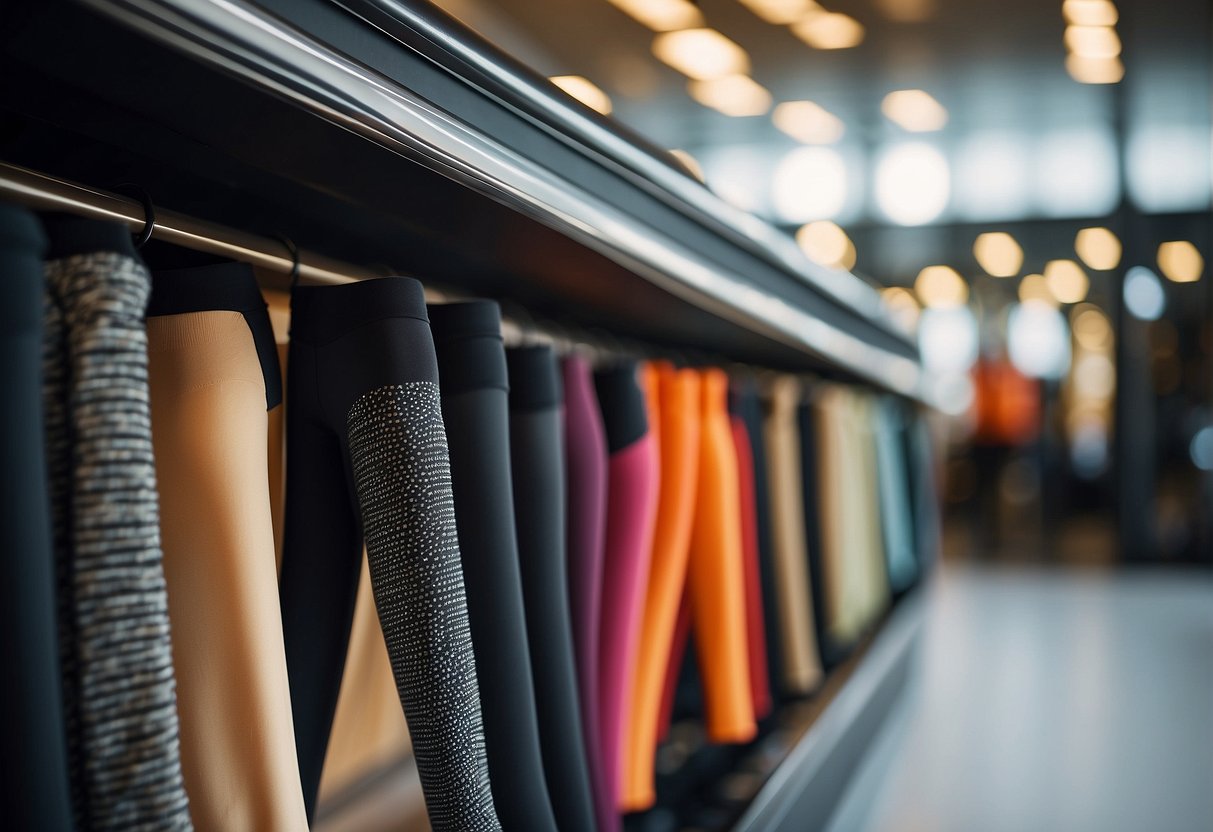
Choosing the right running attire is crucial for comfort and performance. The fit and fabric of your running tights or leggings can significantly affect how you feel during and after your run.
Snug Fit and Elastic Waistband
Your running tights should have a snug fit to keep in place as you move. A well-designed elastic waistband is key to keeping your tights from slipping down, which can cause discomfort and require frequent adjustments during your workout. The snugness of the fit is also important for providing compression, which can enhance blood circulation and may help reduce muscle fatigue.
Moisture-Wicking Materials
Running generates sweat, but your tights shouldn’t stay wet. Moisture-wicking fabrics are essential as they pull sweat away from your skin and facilitate quick evaporation, keeping you dry and comfortable. Tights crafted with synthetic fabrics like polyester or nylon are often effective at moisture management.
Comfort and Breathable Fabrics
Comfort is paramount, and so is ensuring your skin can breathe. Breathable materials prevent overheating and help regulate your body temperature. Look for fabrics that are stretchy and soft against the skin yet resilient enough to maintain their shape. This blend of comfort and functionality will allow you to focus on your run without distractions.
Performance and Comfort During Physical Activity: Running Tights vs Leggings
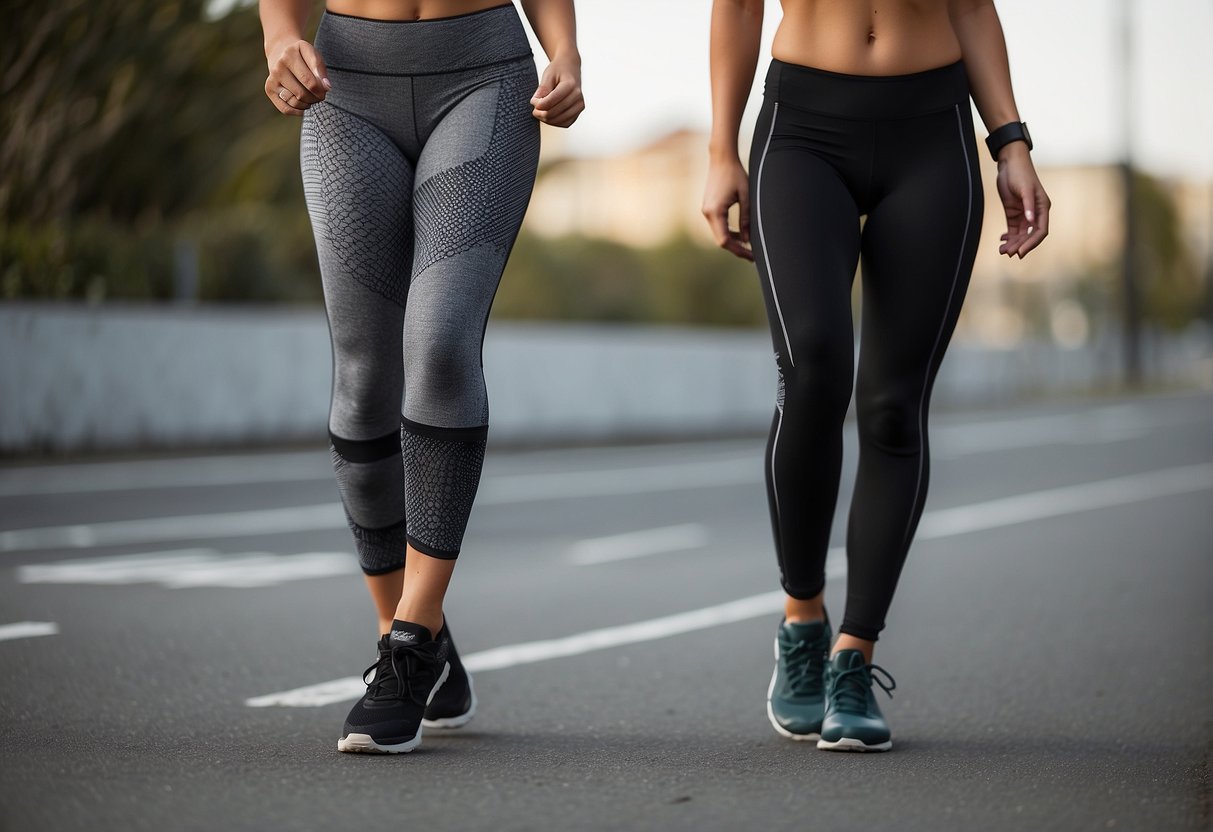
When selecting activewear for running or exercise, your ultimate comfort and performance hinge on features like circulation support and proper fit. Tights and leggings are tailored to enhance your workout experience while responding to various environmental conditions.
Enhanced Blood Circulation and Muscle Support
Running tights are generally designed with compression to improve blood flow and reduce muscle fatigue during your runs. This extra support is beneficial for longer distances, as it can help maintain muscle power and endurance.
Freedom of Movement and Fit
Leggings offer freedom of movement with a snug yet flexible fit, allowing you to move without restriction. Running tights, however, are specifically cut to provide a contoured fit that can move with your body, giving you the feeling of a second skin and potentially enhancing your running experience.
Weather Considerations and Protection
Weather conditions greatly affect your comfort during runs. Running tights are often made with materials that offer wind resistance and warmth, making them ideal for cold weather. Leggings may vary in thickness but might not provide the same protection against the elements.
Choosing the Right Attire for Different Conditions: Running Tights vs Leggings

When selecting your running attire, consider the weather, purpose of wear, and safety to ensure an optimal experience.
Warm vs Cold Weather Gear
Warm Weather: Choose lightweight and breathable running tights that wick away moisture for running in warmer weather to keep you cool. These tights often provide necessary compression without overheating your body. On the other hand, leggings can also be suitable for casual wear during warmer days due to their versatile designs and thinner materials.
Cold Weather: In colder temperatures, you’ll need tights with thermal properties or fleece-lined to retain warmth. Running tights specifically designed for cold weather will also offer features such as wind-resistant panels. Leggings might not provide the same level of insulation required for cold-weather athletic performance.
Casual Wear vs Athletic Wear
Casual Wear: Leggings come in various colors and patterns and can be found in thicker, more durable materials that are perfect for daily casual wear.
Athletic Wear: Running tights, conversely, are crafted from technical fabrics that offer compression and are generally more suitable for athletic activities due to their tighter fit, better range of motion, and moisture-wicking capabilities.
Visibility and Safety
Early Morning or Low-Light Conditions: If you run early or in low-light conditions, consider running tights with reflective details to enhance visibility. Such tights are designed with safety in mind, often incorporating reflective strips or patterns that catch the light.
In contrast, leggings are less likely to include safety features but can be paired with reflective gear if you prefer casual early morning or evening wear. Prioritize items with high-visibility elements to maintain safety regardless of your chosen attire.
Features and Additional Benefits: Running Tights vs Leggings
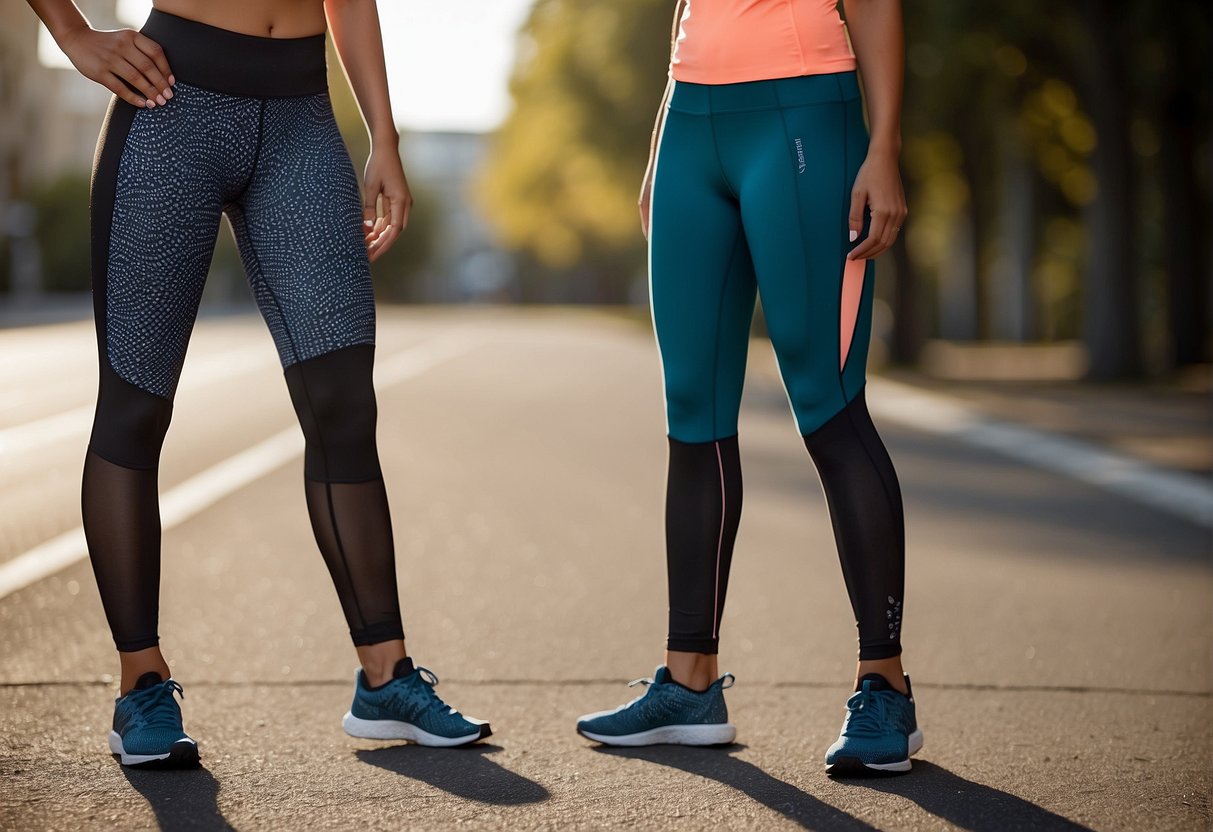
When considering running tights and leggings, you’re looking at various features designed for performance and convenience. Let’s delve into how these attributes cater to your needs, from enhancing muscle recovery to practical design enhancements.
Compression Technology and Recovery
Running tights are often crafted with compression technology. This fundamentally differs from regular leggings in that it provides muscle compression, which can support your muscles during high-impact activities. By encouraging circulation, this technology can help in faster muscle recovery post-exercise.
Manufacturers have developed running tights that strategically place compression panels to aid in this recovery process. As a benefit, compression can reduce muscle soreness after a run, helping you get back on your feet quicker.
Design Elements and Utility
The utility of running tights is often overlooked but is as vital as their functional benefits. Side pockets are a prime example—perfect for storing essentials like water bottles on longer runs. Flat seams are another thoughtful feature, minimizing skin irritation and enhancing comfort.
Additionally, many running tights come with reflective elements. This is an important safety feature if you’re running in low-light conditions, making you more visible to others. An extra layer of protection comes in various forms, from UV resistance to wind-blocking capabilities. Fabrics used in running tights may also offer moisture-wicking properties, keeping you dry and comfortable.
By incorporating these features, running tights provide more than just a snug fit; they offer a fine-tuned garment to optimize your running experience.
Durability and Care of Running Tights vs Leggings Apparel

When choosing your running apparel, understanding the durability of synthetic materials and the correct care practices will ensure your gear withstands many long runs. Maintenance enhances longevity while following proper washing and drying techniques preserves the functionality of sweat-wicking and quick-drying materials.
Maintenance and Longevity
Proper maintenance of your running tights and leggings is crucial for preserving their life span. Opt for synthetic materials like polyester or spandex, which offer durability and elasticity, making them ideal for repetitive running motion. To protect these materials and the technology they incorporate, such as sweat-wicking capabilities, avoid using fabric softeners as they can coat the fabric and reduce its moisture-wicking properties.
- Always follow the manufacturer’s instructions for care.
- If possible, rinse your running garments in cold water after use to remove sweat and reduce bacteria build-up.
Proper Washing and Drying
How you wash and dry your running tights and leggings is equally important as the quality of your apparel. Cold water is gentler on synthetic materials and helps maintain the integrity of the fibers, thus extending the life of your gear.
- Wash your tights and leggings using a mild detergent in a cold water cycle.
- To protect quick-drying materials, air dry your garments away from direct heat and sunlight to preserve fit and prevent the breakdown of fibers.
- Turn your apparel inside out before washing to protect reflective elements and prints.
Taking these measures keeps your running apparel in prime condition for longer and ensures you benefit from the technology embedded in their design.
Making a Personal Choice: Running Tights vs Leggings
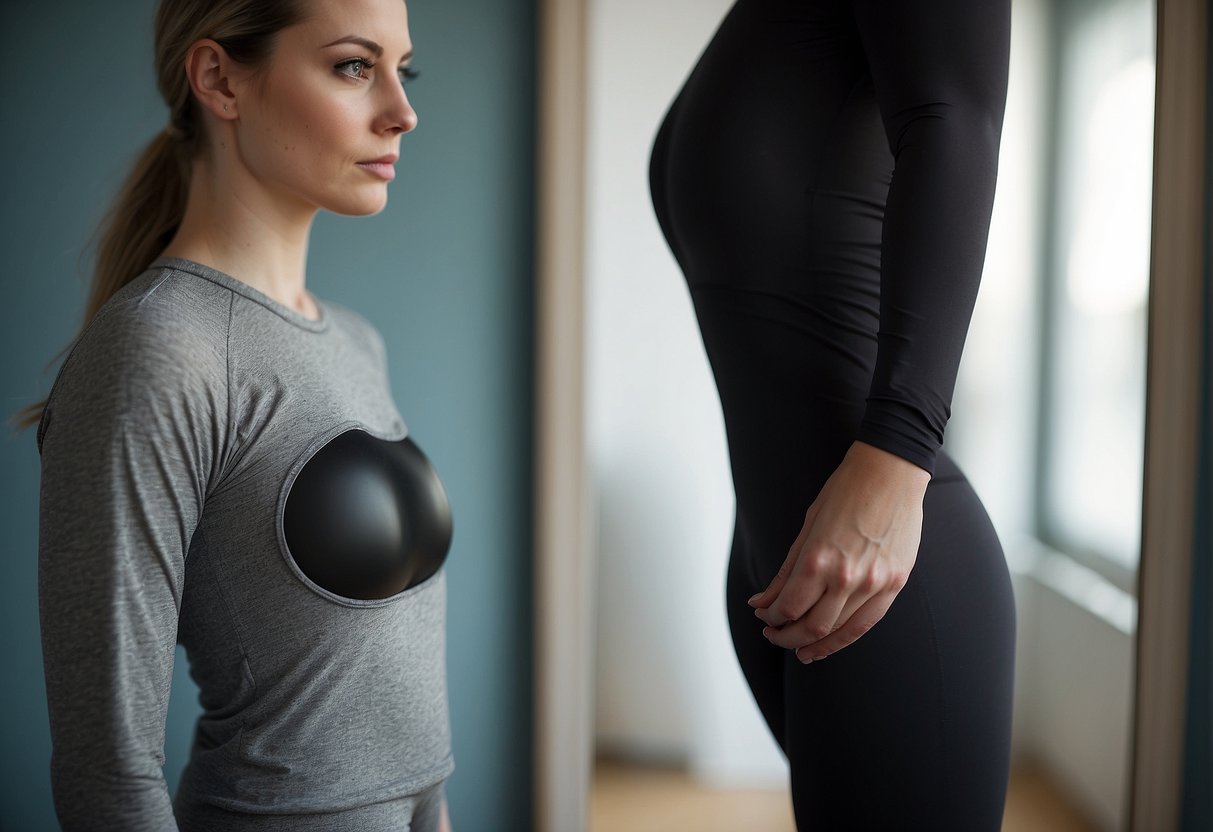
When choosing between running tights and leggings, assessing your needs and preferences is crucial to finding what suits you best. The ideal running attire should combine functionality with personal style to ensure you feel confident and comfortable.
Identifying Individual Needs
To select the right attire for running, consider the following points:
- Functionality: A good pair of running tights often provides compression, aiding performance and recovery. For example, compression tights may be beneficial if you often run long distances.
- Features: Some running tights come equipped with a running belt or pockets for convenience, ideal for carrying items like keys or a phone.
- Climate: Your region’s weather conditions are important. Breathable and wicking materials are best suited for warm climates, while insulated options are better for colder settings.
Adhering to Personal Style
Your style shouldn’t be overlooked when selecting running apparel.
- Design Preferences: Choose an appealing design with colors or patterns that match your taste.
- Fit and Comfort: The best leggings for running fit well without restricting movement or causing discomfort. Always prioritize fit over fashion, although the ideal choice would be a blend of both.
Remember, the best choice is one that caters to both your physical requirements and your style.
Conclusion Running Tights vs Leggings: Selecting the Best Option for Your Running Journey
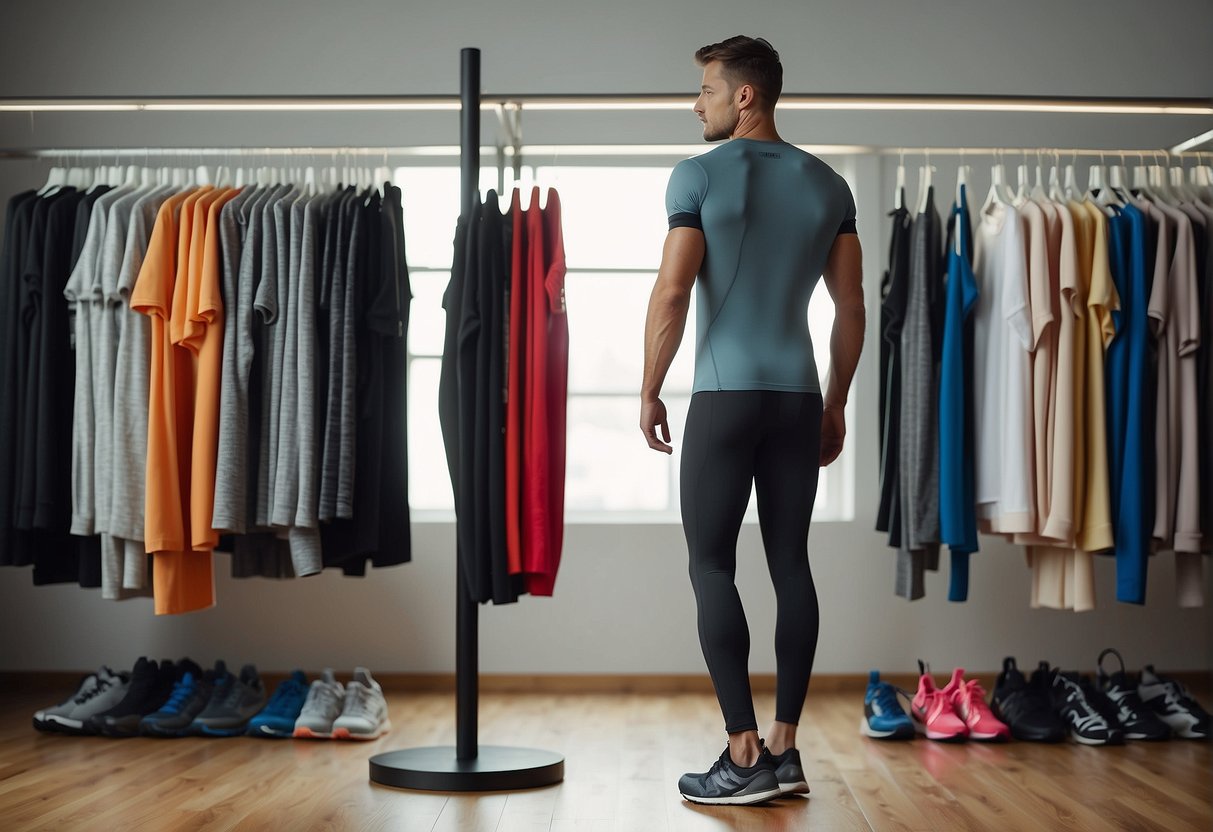
When choosing between running tights and shorts, consider your comfort, the weather conditions, and the running you plan to do. If you’re a serious runner focused on performance, form-fitting tights could be the best option to reduce drag and offer compression benefits.
- Running Tights:
- Often preferred in colder weather for their warmth.
- Provide muscle support through compression.
- It may prevent chafing on longer runs.
On the other hand, running shorts might be a more popular choice during warmer seasons. They offer more airflow, which can help regulate your body temperature and keep you cool.
- Running Shorts:
- It is ideal for hot weather or indoor running conditions.
- Typically, it is more breathable and provides better ventilation.
- A range with built-in liners adds support and convenience.
If you value versatility in your running gear, weighing the benefits of running tights vs leggings alongside shorts might be beneficial. This approach lets you adapt your wardrobe to the changing seasons and running environments. Opt for what offers the most comfort and boosts your performance. The ideal choice in running attire, whether tights, leggings, or shorts, can significantly enhance your enjoyment and effectiveness in the sport.

